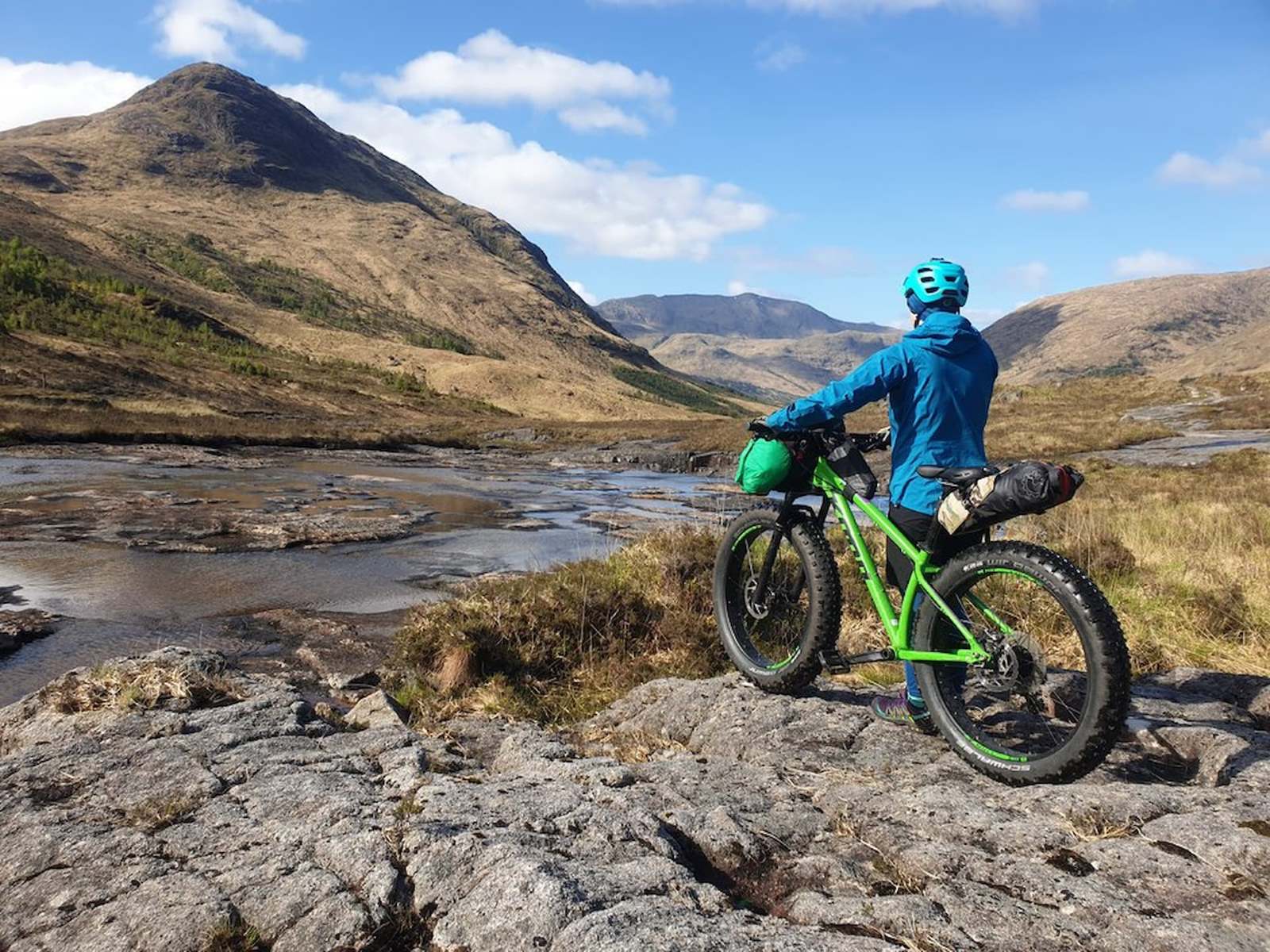
Forget backpacking, bikepacking is the new thing. Two wheels and a whole load of strategically placed bags will take you further and faster than your two feet ever can. Into the wild, into places seldom explored before.
Bikepacking combines all-terrain cycling with camping, exploring and getting off the beaten track. It's about chasing backcountry routes, zipping down off-road singletrack and exploring places you would never ordinarily see.
A few years ago, desperate for a wild adventure, I quit my job and decided to ride from Alaska to Panama. It taught me a huge amount and I'd love to share my tips with you if you're thinking of embarking on a bikepacking adventure. (Side note: You 100% should).
Frankly, we can't think of a better way to get out there and get moving, so we've brought you a comprehensive list of all the kit you could ever possibly need to go bikepacking.
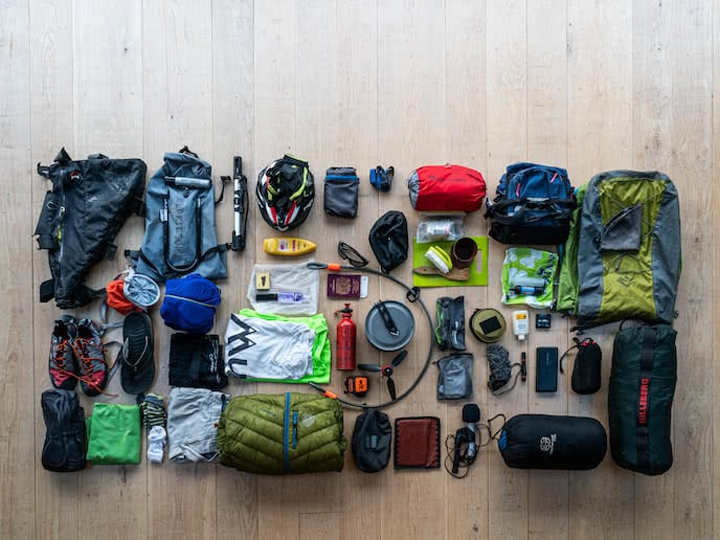
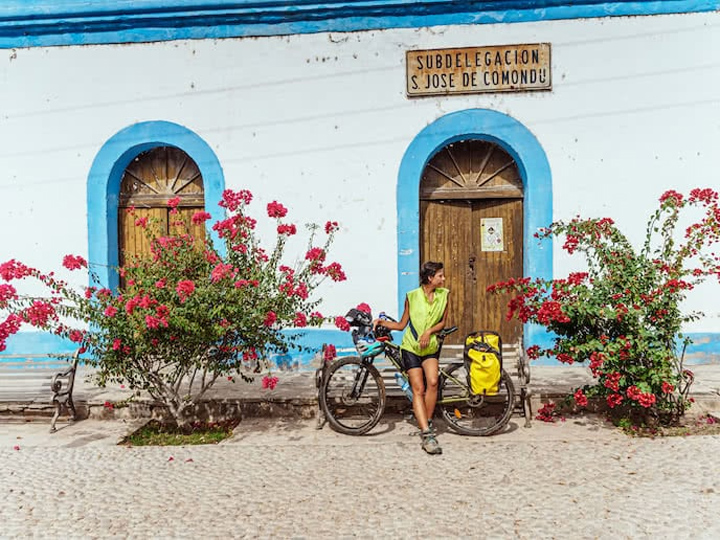
Ok, this one's a bit simple. But it wouldn't be a very helpful list if we didn't even touch on what sort of bike you should be taking with you, would it?
This one is a bit of a minefield, and you can bet every rider will give you a different answer. The usual advice? The best one is the one you already own. Provided the tyres are suitable for off-roading (if that's what you're doing), it fits you, and it's comfortable. If you have a decent mountain bike or cross country bike already, there's no point in investing thousands of pounds into the next top of the range bike, especially if you're exploring on a budget.
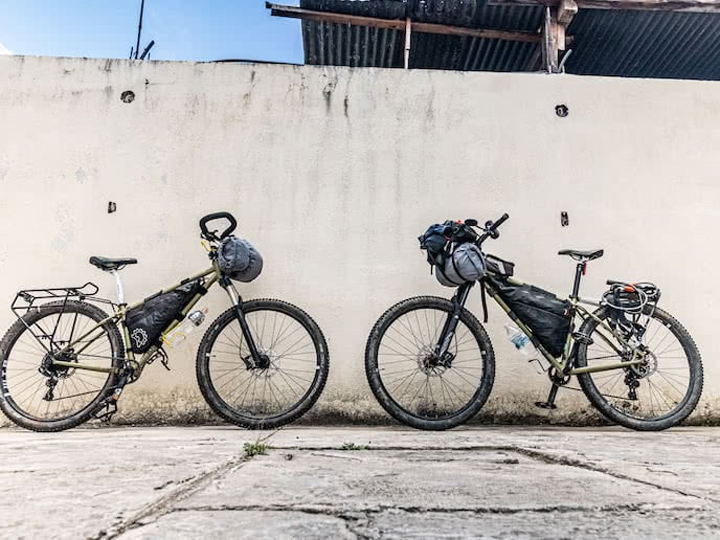
Not got a bike? Get onto Facebook Marketplace, Ebay or Gumtree and look for a decent second hand one. If this is your first foray into bikepacking, it's definitely worth finding a second-hand bike. The planet doesn't need more wasted gear, so always best to reuse first, then invest down the line if you're serious about getting into bikepacking.
You should look for the kind of bike that most suits what you're doing. For single or multi-day adventures where the terrain isn't going to be wildly rough and ready, a cyclocross or gravel bike will see you well.
More remote, technical and rugged terrain will benefit from a mountain bike or even a specific bikepacking bike. They're adapted to riding long distances, keep your back more upright and are designed to be slightly easier on the neck and knees.
Here's a few ideas of where to start:
We do have a few tips though, things to look for or things to tweak on your already existing bike.
This one feels pretty obvious, but we urge you to buy the comfiest saddle you can possibly find. You're going to be spending a long time on it and you'd be amazed how quickly it can get uncomfortable. Again, looking on second-hand sites for these is always a great shout. Books Saddles are the undisputed kings in this space but there are other options. You can also save some cash by buying two pairs of cycling shorts and wearing both at the same time whilst biking. This will make an average saddle feel more comfortable. If you have the cash I'd go for a better saddle though.
Ergon grips are anatomically designed to mould to your hands and provide nerve relief whilst riding, helping to prevent numb fingers, aching hands and forearms. Invest in some of these and your distance covered could improve significantly if this is something you struggle with. Personally, I don't use them but have heard rave reviews from those who do, including my girlfriend who struggles with her wrists when biking long distances.
Arguably one of the best things about bikepacking compared to backpacking is that you don't have to put any strain on your hips and shoulders and can balance the weight out evenly on your bike. As opposed to panniers and racks used for bike touring, bikepacking bags are soft, lightweight and come in a variety of sizes.
There are several different types of bikepacking bags for different areas of your bike, and they usually strap on with inbuilt straps. Having several bags is pretty useful for compartmentalising stuff. No more rooting through the tent to find your tin of baked beans!
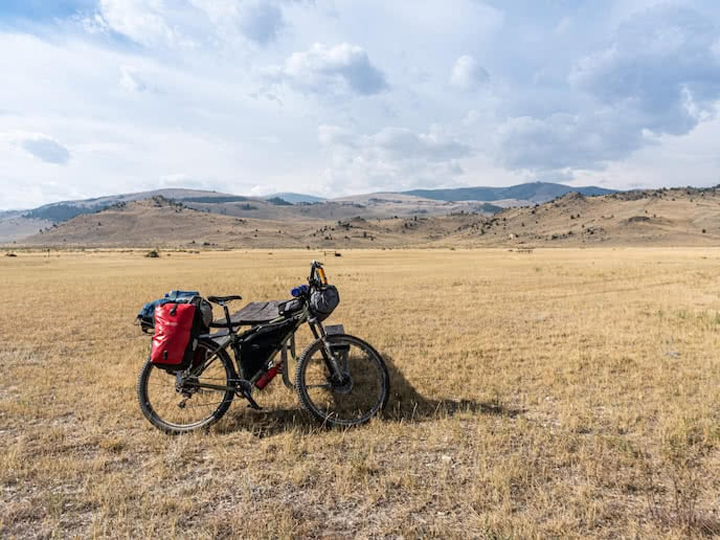
A frame bag attaches to the top tube, or the bike's main frame, within the triangle. Load it up with the heavy stuff, tools, suncream, food etc. This is the place you'll feel the strain of the weight the least so make the most of it!
The handlebars can take around 15-20 litres and the handlebar bag attaches onto the middle of them. This is a great bag for your tent (poles will straighten and weigh it out evenly) or a sleeping bag. Long and thin bags are best for weight distribution and won't interfere with your front tyre.
Generally, 5-7 litre bags that fix around the seat post and cinch on with a voile or webbing strap. It's generally good practice to add something fairly stiff to this bag, so as to stabilise it. Tightly rolled clothes are a good shout. Otherwise, you can get some serious tail wag.
Though bikepacking generally tries to avoid using a backpack, a day pack can be handy if you're just doing a weekend trip. Lunch, layers and raincoats are great in here, we just wouldn't recommend it for a longer trip as you're shoulders will soon feel the burn. And the back sweat doesn't bare thinking about....
A bum bag (fanny pack for our American friends) is a handy alternative and is great for easy access to your camera when you see something fleeting and epic. Store your phone and wallet in here too so that they're always attached to your person. I personally keep mine in the grey and white top tube bag you can see in the photo below. This means easy access and I can see directions whilst navigating from the phone!
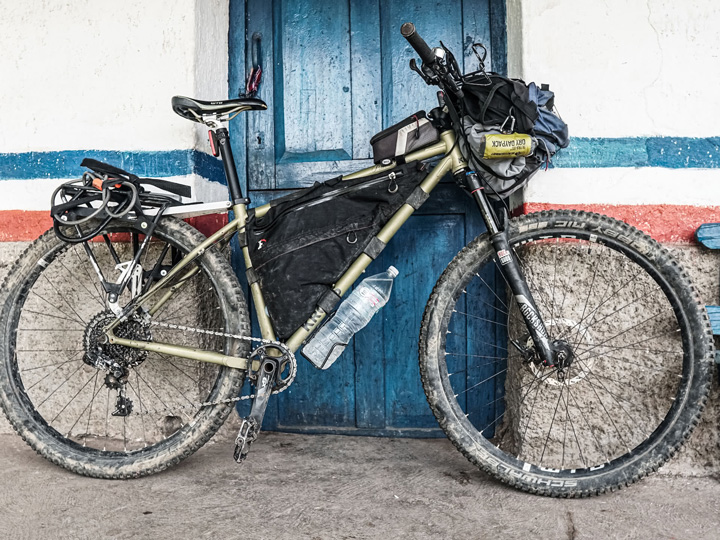
We'll keep it simple: wear a helmet, use your lights and carry a lock (when necessary). The first one doesn't need explaining, as long as you have some form of helmet (that meets minimum safety requirements) on your head then you're good to go.
Lights? A must-have if you're riding in the dark. USB charging ones are a good shout as can be easily topped up along the way. And after having a bike stolen in Mexico, I can't recommend taking a lock enough on relevant trips.
A lot of repair kits will be stuff you already take on day trips. Puncture repair gear, a spare inner tube etc. However, for longer distances, you might require a bit more insurance. Here are some of our essential recommendations:
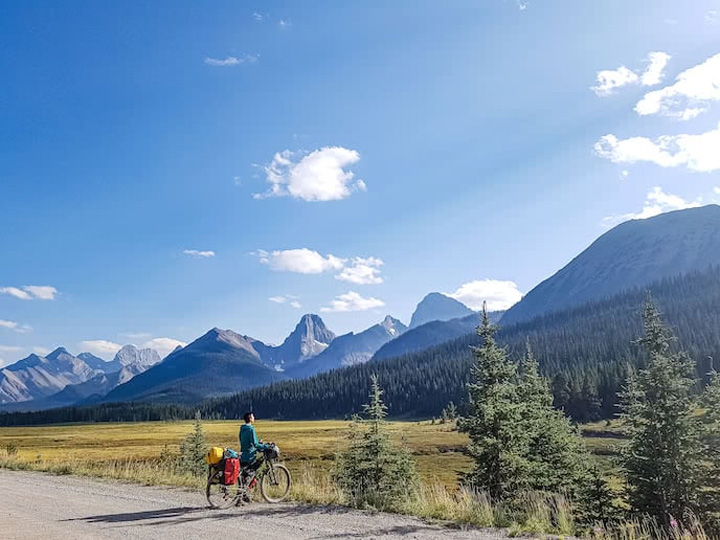
An essential bit of gear for any adventurer, and bikepacking is certainly no exception. Bikepacking trips often take you through extremely remote areas that would be difficult for ambulances or rescue teams to get to, so it's always worthwhile to carry a decent first aid kit to cover any minor or short-term issues.
Make sure you always carry a charged mobile phone too (and a power bank), in case you do need to contact the emergency services.
As with backpacking, lightweight is best when bikepacking. An ultra-light, 3 season (depending on where you're going) sleeping bag will see you through well, so we'd recommend investing in this. A good sleeping bag means better morale and more energy on your rides. There are lots of good options out there but my favourite is the Cumulus Teneqa 850. It's heavier than most but is super warm so is a great option for longer trips.
A foam mat or inflatable sleeping pad is a great addition too if you're camping in a tent (hammocks remove this need). Inflatable mats tend to be a lot comfier, but much heavier and slightly bulkier. A foam sleeping pad will be cheap, light, and hardwearing but takes up a lot of space. I personally use the Sea to Summit Comfort Plus Insulated Sleeping Mat and love it!
Camping overnight? Consider a tent, camping hammock or tarp. Whatever you take should be hardwearing and sturdy, waterproof and as lightweight as it possibly can be. Are you sensing a theme?
Camping hammocks are fantastic for a bikepacking trip. They're light, easy to set up and keep you off the hard, cold earth. Combine with a super light tarp for shelter and you've got yourself a cracking night's sleep.
Tents are great too, just make sure you find one that's lightweight and resilient against harsh weather. Check out our favourite tent brands for some tips.
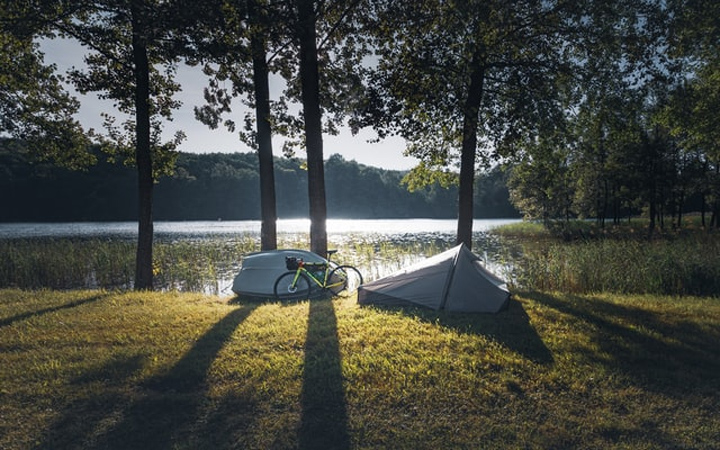
You might be getting the idea here already, but we're going to suggest taking a stove that's lightweight. There are a whole host of camping stoves out there and it can be hard to narrow down the search. Look for one that's easy to use and lightweight, but will actually make you a decent meal.
There's no point taking the lightest thing you can find if it takes forever to boil something and lets you down at altitude or in cold temperatures.
Primus and MSR are great brands and a good place to start. It's worth bearing in mind however that if you're planning a trip at home or in Europe, propane and butane gas canisters are readily available in most places. But if you're planning on going further afield on your bikepacking trip, maybe consider a multi-fuel stove as this will ensure you always have access to fuel. You might find our article on the best camping stoves useful.
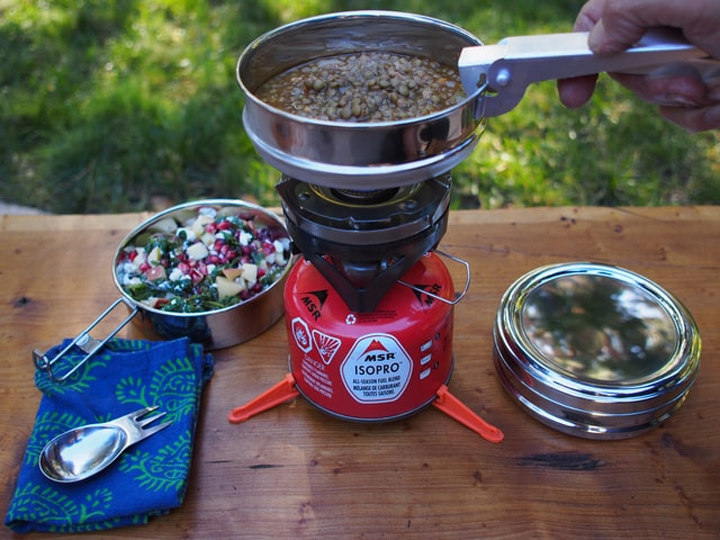
If you've already got some decent camping pots and pans, these will do you just fine. There's no point going out and spending money on the latest tech. As long as they're hardwearing and you guessed it, pretty lightweight, they'll do the trick. A couple of different sized pans are always a good idea for cooking yourself some decent hot grub after a ride. One is fine for shorter trips.
This is a really subjective one. Some adventurers are big on expedition-style ration packs. These are freeze-dried, dehydrated meals that don't take up a lot of space or weight and generally just need heating up and adding water to.
There are more brands out there than we can count and some make really tasty food, others somewhat questionable. So if you go down this route, do your research. And this is only really an option on short trips. They are also expensive. On big rides, food is one of the main things to keep you going and a tasty hot meal at the end of the day is worth getting right.
If you're not too into ration packs, calorie and carb-dense foods such as porridge oats, dried pasta, noodles, rice and nuts and dried fruits are all great.
I always pack a couple of things that are definitely not the most lightweight but will absolutely boost my morale when things get tough. Wagon wheels, good coffee and jelly babies usually do the trick.
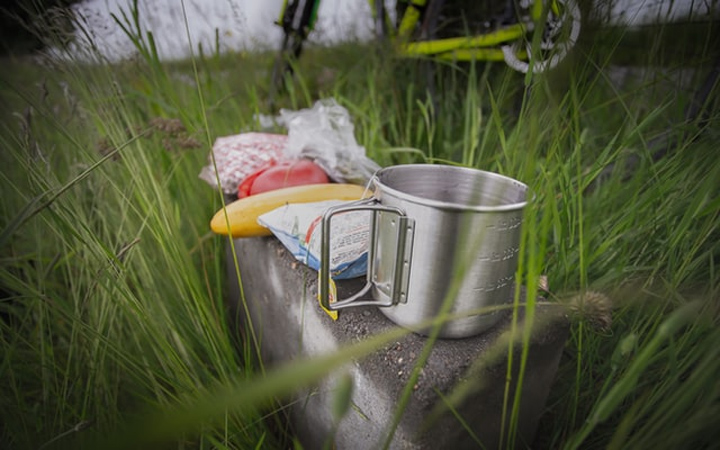
Big rides will need a lot of water. The ideal situation is that you can fill up your bottle as you pass through places, which in the UK is pretty easy, considering how densely populated it is.
In other parts of the world however, it's possible that you'd be riding for a few days without coming across anyone, so you need to ensure you have enough water to last you or have the ability to purify water. We use the Sawyer Mini Filter and love it but there are other options available.
Consider fitting a water bottle cage to the fork or downtube for extra capacity.
Any long-distance adventurer worth their salt will tell you they only pack 2 outfits for a big adventure: wet stuff and dry stuff. Clothes for riding, and clothes to change into at night. We would agree with this sentiment, pack what you absolutely need and nothing more.
You don't need to spend a fortune on clothes for a bikepacking adventure, but something that is quick-drying and moisture-wicking is generally a good idea. Fabrics such as merino wool and synthetics such as lycra or nylon are fantastic for this kind of thing.
Padded cycling shorts and weatherproof gloves can be game-changers too, as are sunglasses, warm layers, a decent waterproof jacket and a sun cap/woolly hat depending on the climate.
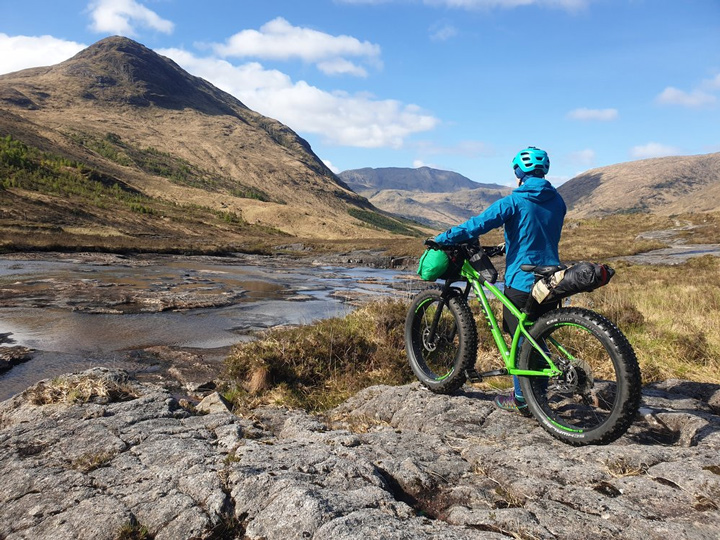
Well, purists would argue you should take none. Pack as lightly as is humanly possible, and only take the bare necessities listed above.
But we know long-distance adventures don't work like that. Morale needs boosting, small wins need celebrating. Also, if you're bikepacking on your own, the evenings can get a little quiet.
Emergency mars bars, a good book (or even better, a kindle), a notebook to journal your adventure, a pack of cards and some hand cream for those cracked chapped hands all fall into this category. Pick a few that you know will carry your mood and treasure them.
This might sound silly, but there is a knack to packing for your bikepacking trip. It's part skill, part science, part brute stuffing force.
Pack your heavy stuff low and close to the centre. The saddlebag is a good place to put your food and anything you'll need later on in the day. That can go to the bottom and will stabilise your load.
Use the frame bag for heavy stuff like cameras. The handlebar bag should carry something evenly weighted. Tent poles or a sleeping mat work well as they won't tip the weight of the handlebars in one direction. Careful not to overload here as handling can be seriously impaired.
Compression bags will also make your life a lot easier on a bikepacking trip, even better if they're colour coded. They allow you to properly stuff things into a tiny fraction of what they are, and they stay that way thanks to the handy roll-down compression straps.
Make sure everything is tied away, and that the straps tying it away are also tied away. Anything can come loose when rattled and the last thing you want is straps caught in your spokes or to have to cycle back a mile to find a lost sock.
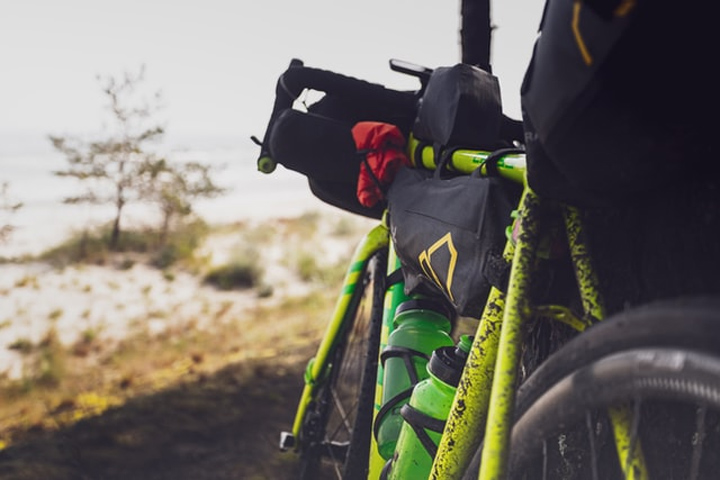
If you invest in a decent merino / breathable cycling top, it'll wick away moisture and odours more than your average cotton t-shirt. Sure, you'll still stink, but you get used to that. Par for the course when bikepacking. A change of clothes in the evening is (nearly) essential, but you only need one set for riding.
Sporks, phones for sat nav, water bottles with in-built filters, there's always room for optimising on space when bikepacking. Think very carefully about what can double up with a second use. See below.
A stuff sack full of clothes makes for a great pillow when bikepacking. If you're somewhere cold, a down jacket is as good as a fluffy cushion. It's more important that your sleeping mat and sleeping bag are comfortable and well insulated, whereas you can find pretty much anything to make a comfortable head rest.
Nerdy, I know, but it saves so much time and faff if you know exactly where your clothes, sleeping kit and food are, without having to rummage through everything before you've remembered what you put where
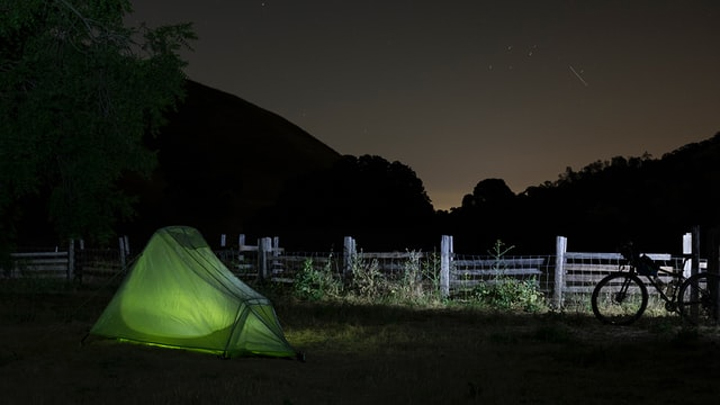
It doesn't necessarily have to. There's definitely a balance between having efficient, lightweight gear and not spending an arm and a leg. Try to buy second hand if you can, as this is best for the planet anyway! There's a lot of really decent gear out there that other first-time bikepacking adventurers have bought and used once.
Be savvy and prioritise what to spend money on. A helmet for example doesn't need to be fancy, nor do your clothes, as long as they're hard-wearing and ideally waterproof. Focus instead on decent cooking and sleeping equipment, as these will be the biggest morale boosters.
No. It depends on what kind of bikepacking adventure you're planning on taking. If you're setting off on a long-distance, multi-week adventure, you'd do well to have most if not all of it. You might be able to eliminate certain things, such as a stove if you think you're going to be passing by a town each day where you can get meals, but most things on the list are essential for a trip of more than a few days.
If you're only going for a weekend, you'll manage without Ergon grips, a spare pair of shoes and a water filter. Be sensible with what you take and remember, we learn by doing! If you get it wrong on your first trip, you'll know what to cut or include on your next one.
Ok so they're not necessarily the most lightweight things, but a book and a pack of playing cards would be our top choice. The former will keep you entertained for hours, the latter can gather a group of new friends in minutes, which is sometimes a blessing if you're on a long-distance solo adventure.